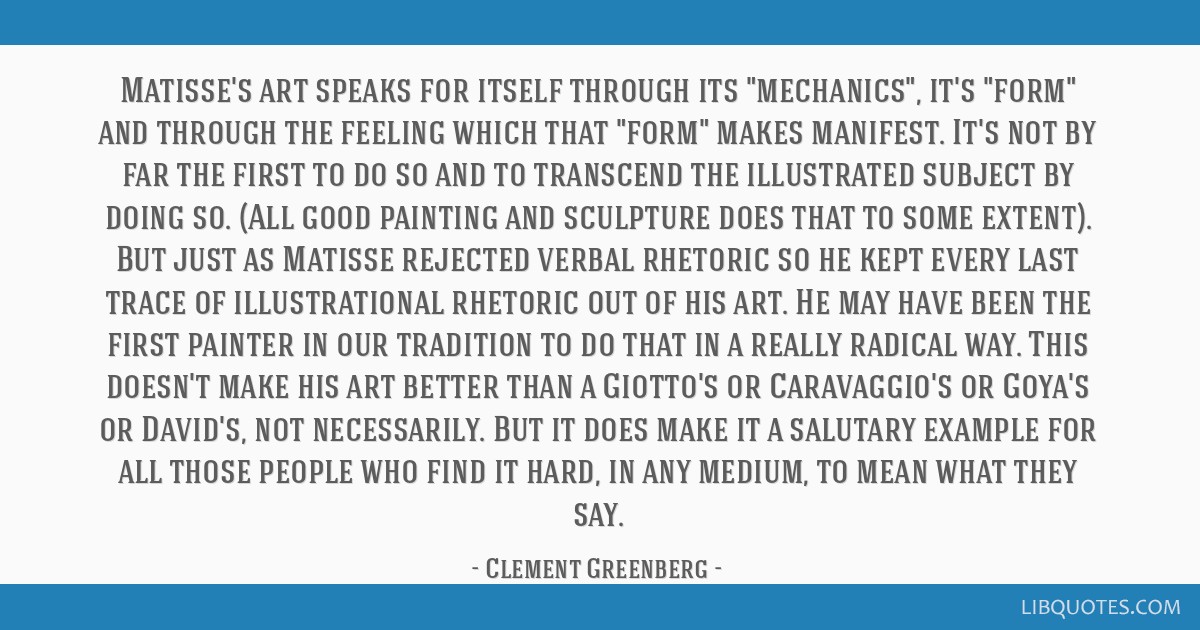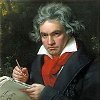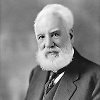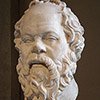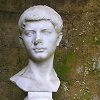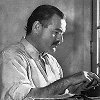Matisse's art speaks for itself through its "mechanics", it's "form" and through the feeling which that "form" makes manifest. It's not by far the first to do so and to transcend the illustrated subject by doing so. (All good painting and sculpture does that to some extent). But just as Matisse rejected verbal rhetoric so he kept every last trace of illustrational rhetoric out of his art. He may have been the first painter in our tradition to do that in a really radical way. This doesn't make his art better than a Giotto's or Caravaggio's or Goya's or David's, not necessarily. But it does make it a salutary example for all those people who find it hard, in any medium, to mean what they say.
On Matisse at sharecom.ca, 1973: On Henri Matisse
